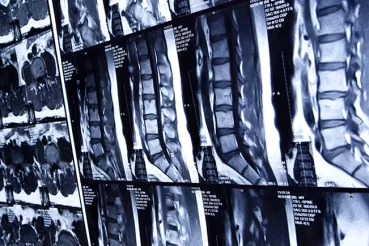Until now, to perform a minimally invasive surgery or other minimally invasive procedures, a physician would typically need to watch a monitor to see an X-ray view of the movement of surgical instruments inside the patient’s body. Now a revolutionary new technology enables physicians to see the surgical field in three dimensions as if they were looking through the skin and into the patient’s body with X-ray vision.
On June 15, Dr. Frank Phillips, professor and director of the Division of Spine Surgery and the Sections of Minimally Invasive Spine Surgery at Rush University Medical Center, became the first doctor in the world to use this augmented reality surgical guidance in a minimally invasive spine surgery.
Using the xvision Spine System by Augmedics, a Chicago-area medical technology company, Phillips was able to perform a lumbar fusion with spinal implants on a patient with spinal instability. Phillips said that the patient, who was experiencing severe back pain and limited mobility prior to the surgery, is doing well.
The xvision Spine System utilizes a headset with a transparent near-eye display. It accurately determines the position of surgical tools, in real time, and a virtual trajectory of the tools then is superimposed on the CT imaging of the patient’s body.
During a minimally invasive procedure, the headset projects a three-dimensional visualization of the navigation data onto the surgeon’s retina. This allows the surgeon to see a three-dimensional image of the patient’s spine with the skin intact as well two-dimensional CT images of the instruments’ path and trajectory while looking directly at the surgical field. In a proof of concept study performed at Rush using donor cadavers, Phillips and colleagues achieved 98.9% screw placement accuracy using the system.
“Having three-dimensional spinal anatomic and two-dimensional CT scan images directly projected onto the surgeon’s retina and superimposed over the surgical field takes spinal surgery to another level,” Phillips said. “Being able to place minimally invasive spinal instrumentation extremely accurately and efficiently, reducing surgical time and complication risk, is critical to improving outcomes for spinal surgery.
“Traditional surgical navigation platforms have been shown to improve accuracy of implant placement, but using augmented reality allows for the advantages of traditional (2D) navigation, plus the ability to visualize the patient’s spinal anatomy in 3D through the skin.”




